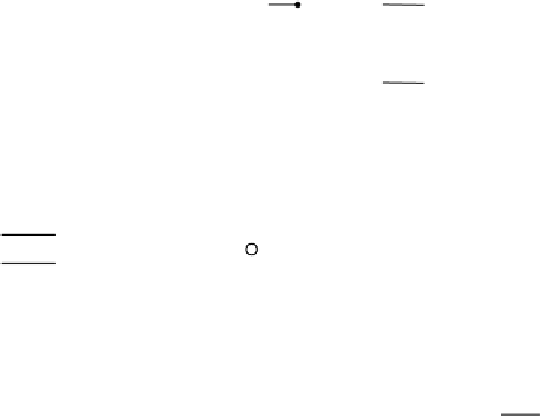Hardware Reference
In-Depth Information
A
A
A
A
(a)
A
A
AB
A+B
B
B
A
A
B
AB
A+B
B
(b)
(c)
Figure 3-4.
Construction of (a)
NOT
, (b)
AND
, and (c)
OR
gates using only
NAND
gates or only
NOR
gates.
gates (or perhaps with simpler gates, for example, two-input gates instead of four-
input gates). In the search for equivalent circuits, Boolean algebra can be a valu-
able tool.
As an example of how Boolean algebra can be used, consider the circuit and
truth table for
AB
AC
shown in Fig. 3-5(a). Although we have not discussed
them yet, many of the rules of ordinary algebra also hold for Boolean algebra. In
particular,
AB
+
C
) using the distributive law. Fig-
ure 3-5(b) shows the circuit and truth table for
A
(
B
+
AC
can be factored into
A
(
B
+
C
). Because two functions
are equivalent if and only if they have the same output for all possible inputs, it is
easy to see from the truth tables of Fig. 3-5 that
A
(
B
+
+
C
) is equivalent
to
AC
. Despite this equivalence, the circuit of Fig. 3-5(b) is clearly better than
that of Fig. 3-5(a) because it contains fewer gates.
In general, a circuit designer starts with a Boolean function and then applies
the laws of Boolean algebra to it in an attempt to find a simpler but equivalent one.
From the final function, a circuit can be constructed.
To use this approach, we need some identities from Boolean algebra. Figure
3-6 shows some of the major ones. It is interesting to note that each law has two
AB
+

























